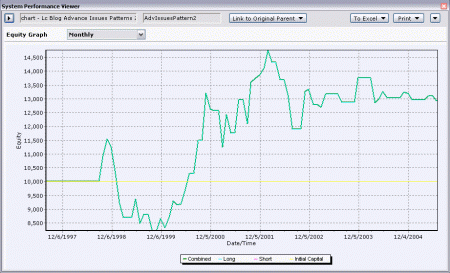Misunderstanding of Trading System Designs
 Most retail traders misunderstand that trading systems are created by ad hoc grinding in trying out all kinds of rules to see if a system is profitable (or whatever metric you like to use as the performance yardstick). Here is a short summary of the most common mistakes that even the so called quants or trading system gurus are making all the time.
Most retail traders misunderstand that trading systems are created by ad hoc grinding in trying out all kinds of rules to see if a system is profitable (or whatever metric you like to use as the performance yardstick). Here is a short summary of the most common mistakes that even the so called quants or trading system gurus are making all the time.
Having tons of indicators and then creating complex rules around them
Most indicators are derivatives of the underlying price series. Thus, in general, it is pretty safe to say that indicators derived from this price series are likely to be correlated. So, throwing in multiple rules based on these indicators as filtering condition for, say, a potential trading setup is an elaborated exercise of data masturbation.
I have more disgusting terms describing how naive the act is so I think I should stop right here.
Generate statistics on overall dataset without checking the time series stability of the said statistics
Many people are smart enough to explore the statistical behaviour of the markets they trade. It is a good thing.
But betting the farm based on the statistics without first verifying the stability of the statistics, say, at least on yearly basis, is a suicidal attempt to kill the trading accounts.
Using static parameters in a market (like index future) that does not have a stable valuation range
Many people optimize their trading models with static parameters. The most famous ones are the stop price and target price. There is a reason why market making bots are gunning for these stops, isn’t it?
Static parameters are not suitable for markets with ever changing price level and volatility. Use relative volatility to adjust a model’s behaviour can do magic in adapting the model to the current trading environment.
Rules fitting is a form of optimization
I have seen enough gurus b.s. that they do not optimize their trading models, yet from the more detailed disclosure of the trading rules, the highly tailored rules are optimized.
A good example of optimized rule is choosing an entry price for a breakout trade. By modifying the rule itself to buy the breakout of the previous close, current open, or an arbitrary price level, the performance of the trading system is affected enormously.
There is no shame in rule optimization nor parameter optimization. Have it done correctly you have a trading model that should perform well for a period of time. Just do not lie to yourself that you are not using optimization because you need to know optimization is employed hence close monitoring is necessary to make sure the market behaviour has not changed that render the optimized rule or parameter ineffective (or useless, if taking this to the extreme).
A sound driver of price does not necessarily produce the best performing trading model
A good trading model can be very simple. It can exploit one simple bias (or price driver) that net handsome profit year after year.
A good model like this is ruined if the trader choose to make it better with all kinds of modifications to improve the performance.
Focus on the reasons why the model works and learn to accept the weaknesses of the model. It is way better than adding rules blindly to improve its performance.
(Lawrence: written after a not very present discussion of trading models with a bonehead)














